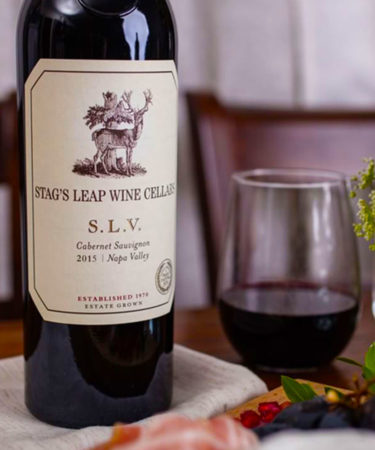The world of wine is confusing for many reasons, not least of which is the nomenclature. Yet few linguistic intricacies are as puzzling as the ones surrounding Stag’s Leap Wine Cellars (SLWC), a Napa Valley producer with global impact and maddening attention to detail.
The winery turned Napa Cabernet Sauvignon into a major player and was almost undone by an apostrophe.
To ensure you’re putting your punctuation in the right places — and drinking what you think you are — here are eight things you need to know about Stag’s Leap Wine Cellars.
-
Stag’s Leap Put Napa Cab on the Map.
Stag’s Leap Wine Cellars was founded by Warren Winiarski in 1970. The winery’s first release, the 1973 Stag’s Leap Wine Cellars Cabernet Sauvignon, would go on to beat world-famous reds produced by first-growth Bordeaux châteaux like Château Mouton-Rothschild and Château Haut-Brion at the 1976 Judgement of Paris.
-
Its Victory Started a String of Legal Battles.
Demand for Winiarski’s wines surged after the blind tasting, as did confusion. Many incorrectly believed that neighboring vineyard Stags’ Leap Winery had produced the winning wine, as the names are remarkably similar.
Winiarski started a legal battle with Stags’ Leap owner Carl Doumani. It went all the way to the California Supreme Court in 1986, which decided that both wineries had a right to use the name. To help differentiate between the two, Stag’s Leap would use the apostrophe before the S, and Stags’ Leap would use the apostrophe after the S.
The frosty neighborly relations eventually thawed and, at the end of the 1980s, the two producers combined to fight against the creation of an official Stags Leap District AVA. They were ultimately unsuccessfully and AVA designation was granted in 1989.
-
Stags Leap District Is Named for an Actual Stag.
The region gets its name from a popular local legend that tells of a stag eluding hunters by leaping to freedom across the district’s landmark peaks.
The “valley within the valley” is home to some of Napa’s most famous vineyards.
Enclosed by the Stags Leap Palisades to the east, and rolling hills and the Napa River to the west, Stags Leap District is occasionally described as the “valley within the valley.”
The district is home to some 17 wineries, including some of Napa’s most celebrated — Shafer Vineyards, Chimney Rock, and Clos du Val — as well as 12 different grape growers. Cabernet Sauvignon comprises the bulk of production; these wines are often described as being concentrated but elegant, like an “iron fist in a velvet glove.”
-
Feeling Fancy? SLWC Has Reserves.
While the 1974 vintage was aging, Winiarski noticed that one of the casks contained a standout wine, so he released it as a premium reserve line. He named it Cask 23, after the 1,000-gallon aging vessel from which it was pulled. To this day, the winery continues to release Cask 23 from the best grapes in significant vintages.
-
SLWC Produces Wine With an ‘Iron Fist.’
Cask 23 is one of the three Estate Collection Cabernet Sauvignon wines for which SLWC is famous. The Paris-judgement-winning Stag’s Leap Vineyards (S.L.V.) is the second of the three, while the third, Fay Vineyard, was introduced in 1990. Each is celebrated for expressing the “iron-fisted” concentration of the district, which also adds to their ageability.
-
The Wines Sell for a LOT of Money.
Prices can reach into the hundreds of dollars. According to Wine-Searcher.com, the average price of a bottle of Cask 23 is $252. Stag’s Leap Vineyards fetches a lofty $153, while the Fay Cabernet musters a “meager” $135.
-
So Did the Winery.
After nearly 40 years at the helm, Winiarski decided it was time to sell up. He approached long-time friend Piero Antinori, the heir to a 600-year Italian winemaking legacy in Tuscany. Antinori, in turn, proposed a partnership between his own brand and Ste. Michelle Wine Estates and, in 2007, the sale of Stag’s Leap Wine Cellars was agreed to for a reported $185 million.
-
There’s a Bottle of SLWC Wine in the Smithsonian.
In 2013, the Smithsonian Institution named the Paris-Judgement-winning 1973 S.L.V Cabernet as one of the “Objects that Made America.” One of the final remaining bottles of the wine is housed in the institution’s National Museum of American History in Washington, D. C. The exhibit is a lasting reminder of Winiarski and Stag’s Leap Wine Cellars’ continued influence on the fame (and fortune) of the American wine industry.


